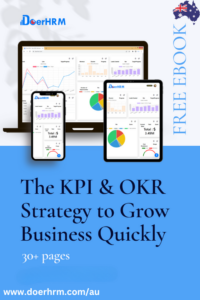Simply said, employee performance refers to how a member of staff performs their job obligations, completes essential tasks and acts in the workplace. The quality, quantity, and efficiency of work are all factors in determining performance.
When leaders keep track of employee performance, they can get a sense of how the company is doing. This information not only serves to emphasise what companies can do now to improve their business but also feeds into future growth strategies.
Putting a premium on employee performance, on the other hand, benefits more than just the company. It enables people to achieve their maximum potential while also boosting overall performance, which can boost morale and improve the quality of work performed.
Finally, but most significantly, clients may be disappointed if personnel are underperforming. As a result, poor performance and difficulty meeting goals may harm the entire company.
Then, before we go into the employee performance measurement examples, there is one more thing we are going to talk about which is how performance is measured. This can also help you to understand the employee performance measurement examples easier.
How Is Performance Measured?
As every job is unique, the measures used to assess employee performance will ultimately be determined by the type of business in which the company and its employees operate.

However, the following are the most common approaches to assessing performance:
- Quality of work. The Standard of work produced is a key indicator of performance. Are employees putting in maximum effort to ensure high-quality results? Are performance objectives being met? Quality of work provides the basis to analyse all other elements of their performance.
- Speed and efficiency. Looking at how much employees accomplish in an average week, month or quarter, how does this match up to your expectations? Are deadlines met, vastly improved on, or is time wasted? Are corners being cut to produce work quickly? Efficiency is the result of maximum output at least cost so this is vital to be aware of within your company.
- Trust and consistency. Ask yourself if you trust your employees to do all their work to a high standard and deliver it on time. Do they work independently or do you feel that you often have to step in? Do they consistently display company values? Are they punctual and present to the expected standard? High-performing employees can be trusted with autonomy and continue to produce strong results without much supervision.
We are now finally going into the employee performance measurement examples. So, what are actually included in the employee performance measurement examples? The employee performance measurement examples have included different methods used by employers. They range from purely quantitative evaluations. For example, 360-degree evaluation, self-evaluation and Management by Objectives (MBO) are the methods that are all included in employee performance measurement examples. Do you want to know more details? Here will be telling you more detail about these employee performance measurement examples.
How Is Employee Performance Data Measured?

When you measure something – such as for a recipe or a construction project – it’s often a numbers game. However, when measuring human performance, you must use a combination of hard numbers and soft intuitive insights.
Here are a few ways that being included in employee performance measurement examples:
- 360-degree evaluation. The first way which is being included in employee performance measurement examples is 360-degree evaluation. This well-named approach considers comments, views, and judgments of an employee’s performance from the company’s circle of individuals with whom they work. Coworkers, supervisors, and others may be included.
- Self-evaluation. Another way which is being included in employee performance measurement examples is self-evaluation. It is highly useful to ask an employee to evaluate her own performance. Comparing a self-evaluation to your own objective appraisal can help you uncover parallels and differences, as well as gain a better understanding of your employees’ performance. It has the potential to spark dialogues that are helpful to employee growth.
- Management by Objectives (MBO). Other than that, Management by Objectives (MBO) is also a method which is included in employee performance measurement examples. It is a method in which employees and managers collaborate to develop objectives. It is also known as “management by results.” MBO provides workers with a clear grasp of what is expected of them and allows them to participate in the process, which may improve communication and motivation.
To learn how OKRs can help take your team to the next level, enroll in our OKR Mastery course and earn a 35% commission when you invite others to join this course!









